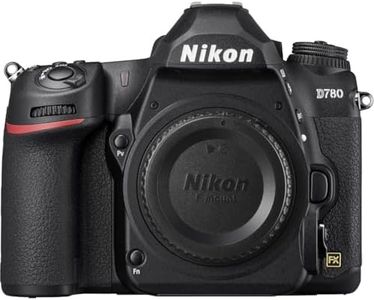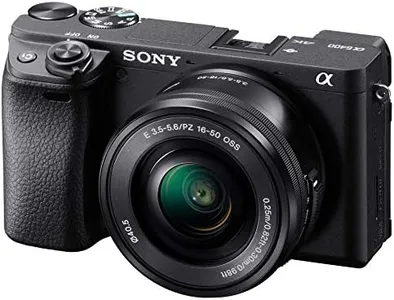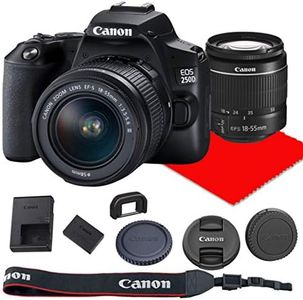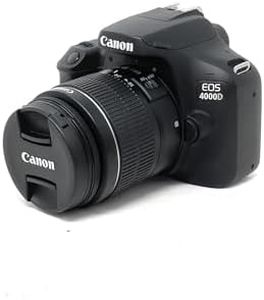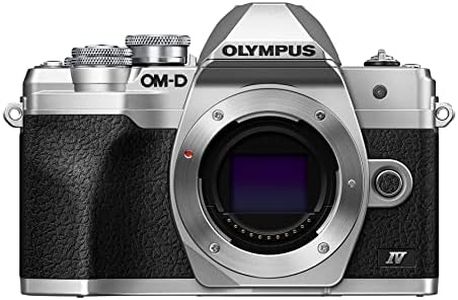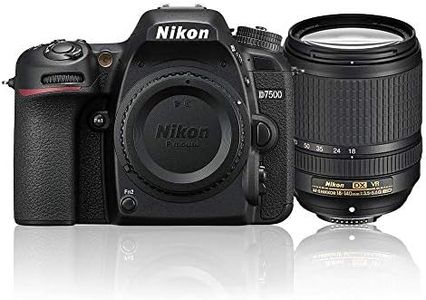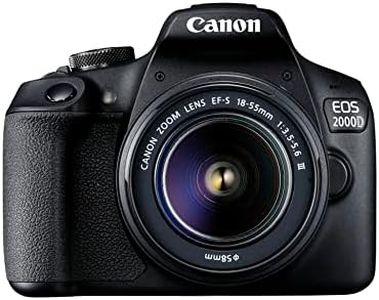We Use CookiesWe use cookies to enhance the security, performance,
functionality and for analytical and promotional activities. By continuing to browse this site you
are agreeing to our privacy policy
10 Best Dslr Cameras
From leading brands and best sellers available on the web.Buying Guide for the Best Dslr Cameras
Choosing the right DSLR camera can greatly influence your photography experience. To start, think about what you plan to photograph most—whether it's landscapes, portraits, sports, or everyday moments. The key is to balance ease of use, image quality, and flexibility, so the camera fits your skills and grows with your interests. Understanding important specifications helps you narrow down options and guides you to a camera truly suited to your needs.Sensor SizeThe sensor is the part of the camera that captures light and makes your images. Larger sensors (like full-frame) generally mean better image quality, especially in low-light, and allow for more background blur, but tend to make the camera bigger and costlier. Smaller sensors (like APS-C or Micro Four Thirds) make the camera lighter and the lenses cheaper, but might not perform as well in challenging lighting. Choose a larger sensor if you want the best image quality for portraits, landscapes, or low-light situations. A smaller sensor could be perfect for travel, casual shooting, or if you want a more compact, lighter camera.
Megapixel CountMegapixels tell you how many tiny dots make up your photos. More megapixels mean you can print bigger pictures or crop without losing much detail. However, higher megapixel counts aren't always better—they can make files bigger, and after a certain point, the difference isn't noticeable unless you print large sizes. If you mostly share photos online or print standard sizes, a mid-range megapixel count is enough. If you plan to crop your photos a lot or print posters, aim for higher megapixels.
Autofocus SystemAutofocus helps the camera focus on your subject quickly and accurately. Systems vary by both the number of focus points and how well they track moving subjects. Entry-level models often have fewer focus points, making them fine for still subjects, while advanced cameras offer more points and better tracking for action shots. If you mainly shoot still objects or landscapes, a basic autofocus system will do. For sports, wildlife, or moving kids and pets, a more advanced autofocus system will give you sharper results.
ISO RangeISO measures the camera sensor's sensitivity to light. A higher ISO helps you shoot in darker conditions without needing a flash, but it can also add grain or noise to your pictures. Cameras with a wide ISO range give you more flexibility indoors or at night. If you often capture images in dim places or like night photography, consider a camera with good performance at higher ISOs. For mostly outdoor or well-lit scenes, standard ISO capabilities are enough.
Continuous Shooting SpeedThis tells you how many photos the camera can take in one second, often called 'burst rate.' This is especially important if you plan to photograph action, sports, or wildlife. Faster cameras can help you catch just the right moment. If you shoot mainly still scenes or casual family photos, a slower burst rate won't be a problem. For sports or fast-moving subjects, look for higher continuous shooting speed.
Viewfinder TypeDSLRs typically have optical viewfinders, letting you see the scene directly through the lens. Some entry models might also have basic electronic elements or display info overlays. Optical viewfinders are great for bright conditions and for seeing things as they are, but some people like electronic displays for previewing exposure and settings. If you prefer traditional photography and want a real-time, lag-free view, an optical viewfinder is ideal. If you want more information on your display or shoot a lot in low light, check for hybrid or electronic options.
Size and WeightSize and weight affect how comfortable the camera is to carry. Larger DSLRs can offer better handling and bigger, easier-to-use controls but are heavier to lug around. Compact models are lighter and ideal for travel or day-to-day use. Think about your comfort: if you see yourself carrying it for long periods, or hiking, go smaller and lighter. For home use or studio work, the extra size may not matter and could help your grip.
Lens CompatibilityDSLRs use interchangeable lenses, and every camera brand or line has its own lens system. Having a wide range of compatible lenses means more flexibility as your needs grow—from wide-angle for landscapes to telephoto for wildlife. Some entry models are limited to certain lenses or may not support advanced features. Consider what kinds of photos you want to take now and in the future, and make sure your camera offers a broad lens selection.




